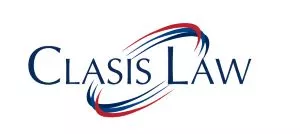The Hon'ble Supreme Court of India by its recent judgment passed on 1st March, 2021 in A. Navinchadra Steel Pvt. Ltd Vs. SREI Equipment Finance Limited & Ors1 has settled the law in respect of maintainability of a section 7 and/or Section 9 Petition filed under Insolvency and Bankruptcy Code, 2016 ("IBC/Code") after the admission of winding up Petition/during the pendency of the winding up Petition qua the same Corporate debtor.
The Appellant in this matter contested the maintainability of a section 7 IBC Petition filed before a National Company Law Tribunal ("NCLT") post admission of the winding up Petition qua the same Company on the basis that irreversible/irretrievable steps have already been taken in the winding Petition post its admission and appointment of provisional liquidator by the Hon'ble Bombay High Court. That as per the section 446 of the Companies Act, 19562 no suit or other legal proceedings can be commenced or continued once there is admission of a winding up Petition. It was also argued that it is inaccurate to imply that a winding proceeding shall inevitably result in corporate death as there are provisions under the Companies Act, 1956 regarding compromise and arrangement3 as a result of which the winding up court could stay the winding up and order restructuring. Lastly, it was contended that the only route available was to seek transfer of the Company Petition in winding up from Bombay High Court to the NCLT instead of filing a section 7 Petition.
In favour of the maintainability of the section 7 IBC Petition, it was argued that section 7 IBC proceeding is an independent proceedings which can be initiated anytime even after the winding up order. That Code has an overriding effect in view of section 238 under IBC and the non-obstante clause contained therein. As a result, in case of any conflict of the Code with the Companies Act4, the Code shall prevail being a special statue. It was also contended that no irreversible steps had been taken in the instant winding up Petition as the provisional liquidator continues to be in control of the assets of the Company and the private sale of an asset of a company by a secured creditor who opted to stay outside the process of winding up cannot be considered as irreversible/irretrievable step taken in the winding up process.
The Hon'ble Supreme Court and the both the contesting parties in this case heavily relied upon the findings given by the Hon'ble Supreme Court in its earlier decision in Action Ispat & Power Pvt. Ltd Vs. Shyam Mettalics & Energy Ltd.5 ("Action Ispat") where the Apex Court using its discretionary power upheld the transfer of the winding up Petition from the Delhi High Court to the NCLT, post admission of winding up Petition even after liquidator had taken control assets of the Company. In doing so, the Hon'ble Supreme Court considered the beneficial result of IBC for a Company in the red and held that so long as the actual sales of the immovable/movable properties have not taken place, nothing irreversible is done to warrant a Company Court from staying its hands on a transfer application. It is only when winding up proceeding have reached a stage where it is it is irreversible/impossible to set the clock back that the Company Court shall proceed with the winding up proceedings.
After considering the relevant facts of the case, findings given in the Action Ispat matter and jurisprudence on the subject matter in detail, the Hon'ble Supreme Court upheld the maintainability of the section 7 IBC proceeding and observed that mere fact that a winding up petition is admitted or pending shall not trump any subsequent attempt for revival of the Company through a section 7 and/or Section 9 Petition filed under IBC. That section 7 and/or Section 9 Petition filed under IBC is an independent proceeding which is to be tried on its own merits and only where a company in winding up is near its corporate death that no transfer of winding up proceeding would take place to the NCLT to be tried as a proceeding under IBC.
Conclusion
The findings arrived by the Hon'ble Supreme Court in this case is aligned with the objective of IBC delineated in Swiss Ribbons (P) Ltd. v. Union of India (2019) 4 SCC 17 briefly being that IBC being a special statue dealing and providing for the revival of a Companies which are in the red and also welcoming the larger public interest and the economy of a country.
Footnotes
1 2021 SCC OnLine SC 149
2 Equivalent to Section 279 of the Companies Act, 2013
3 Section 391 to 393 of the Companies Act, 1956
4 See section 446 of the Companies Act, 1956/Section 279 of the Companies Act, 2013
5 2020 SCC OnLine SC 1025
The content of this article is intended to provide a general guide to the subject matter. Specialist advice should be sought about your specific circumstances.

